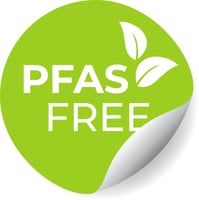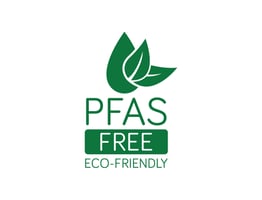Non-fluorinated water repellent clothing has become common in outdoor jackets over the past few...
PFAS-free rain jackets. What's the problem?
Did you know that rain jackets are now switching to PFAS-free? Here we will explain the advantages and disadvantages of the switch to PFAS-free rain jackets.
What is PFAS in the first place?
PFAS is properly described as a polyfluorinated chemical or perfluorinated compound. It can also be called an organofluorine compound. Simply put, they are compounds with carbon and fluorine bonds. It is important to note that PFASs have been defined in a variety of ways, and there is currently no absolute definition, and depending on the definition, the term may be broad or narrow in scope.
The terms PFC, PFOA, and PFOS are sometimes used in a similar sense to these. You will need to understand the differences between them.
What is PFC?
The most confusing distinction is between PFC and PFAS. It is difficult to explain the difference because they are already being used interchangeably and can be understood as one and the same thing.
In terms of terminology, PFAS is a polyfluorinated chemical and PFAS is a polyfluoroalkyl compound. The difference in terminology is the presence or absence of alkyl groups, but in reality they are used together. The term PFAS is more complex because it is defined separately by the organizations and places that use it.
For the time being, it is safe to assume that PFC ≒ PFAS.
What about PFOA and PFOS?
PFOA and PFOS should not be confused with PFAS and PFC, because while PFAS and PFC are generic terms for organic fluorine compounds, PFOA and PFOS are substances within PFC and PFAS. They have similar names and are similar from a macro perspective, but they too should not be lumped together. They are clearly different from each other in terms of their production methods, and they differ in various aspects, such as environmental impact and human health effects.
What is the problem with PFAS?
The most important characteristic of PFAS is that they are persistent. In other words, they are difficult to decompose in the natural world. Because of this resistance to degradation, we regularly ingest PFAS from water and food. Unfortunately, PFAS are so globally distributed that it is difficult to go through our daily lives without ingesting them, mainly from the air, house dust, and water and food.
PFASs that have already spread around the world are difficult to recover, so we have no choice but to wait for them to decompose, which can take a very long time.
What has changed with PFAS-free and the advantages of PFAS-free
PFAS-free means to avoid using PFAS, but what has changed by not using organofluorine compounds?
One is the environmental benefits.
We started using PFAS around 1940. Although it is still in its infancy, PFAS is not easily decomposed in the environment, so it remains in the environment for a long time. It depends on what kind of environment it is in, but it can take not only 10 or 20 years, but more than 100 years before it is completely decomposed.
PFAS is a man-made compound that does not exist in nature. The microplastic issue is a hot topic these days, and I have the impression that it is similar to the microplastic issue, except that PFAS are invisible, and we need to change the fact that we are discharging PFAS into the environment for a long period of time. Like changing straws from plastic to paper, we are now switching products that used to use PFAS to PFAS-free.
Is there a human impact?
Any article or video that discusses PFAS will always address the harmful effects of PFAS.
In fact, PFOA, which is part of PFAS, has been positioned by the World Health Organization's Institute for Cancer Research as being linked to cancer; we did not know at the time of use that PFAS had any effect on the human body, but with improvements in analytical techniques, we now know the link.
Unfortunately, at this stage, only some substances, such as PFOA and PFOS, have been sufficiently studied in the human body, and even with PFOA and PFOS, which are being studied, it is not clear how much exposure is a problem, and the situation is such that a line has been drawn temporarily as a provisional standard.
PFAS are already spreading not only domestically but also globally, with data showing that PFAS can be detected in the blood of almost all Japanese people. We have already been exposed to PFAS. We need to consider the amount and duration of the health hazard, but we also need to know that the situation is still under investigation as a conclusion.
Disadvantages of PFAS-free
Unfortunately, we are going to have to deal with some short-term pain in transitioning to PFAS-free. Because of the many wonderful properties that PFAS has, it is still being used in so many areas. In many areas, no alternative technology has been found to replace it in most of these areas, notwithstanding the water repellency of rain jackets. Switching to PFAS-free in this situation means that we will likely have to put up with the convenience we have enjoyed in the short term.
I believe this is similar to the microplastics mentioned above, and those of us who are accustomed to plastic straws feel uncomfortable with paper straws. However, since PFAS is used in so many different fields, it can be fatal in some cases. Against this background, we are gradually changing from fields that are not directly related to life, such as clothing.


